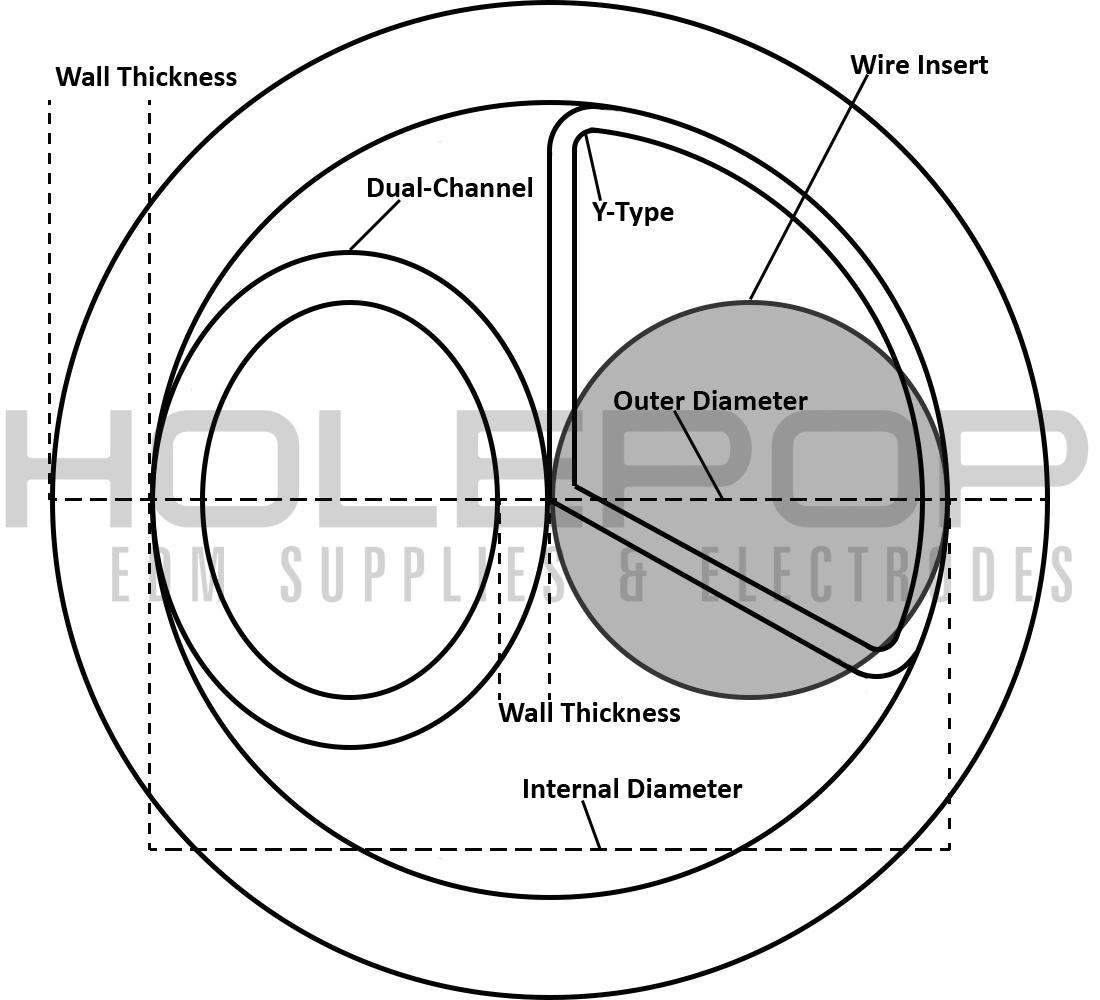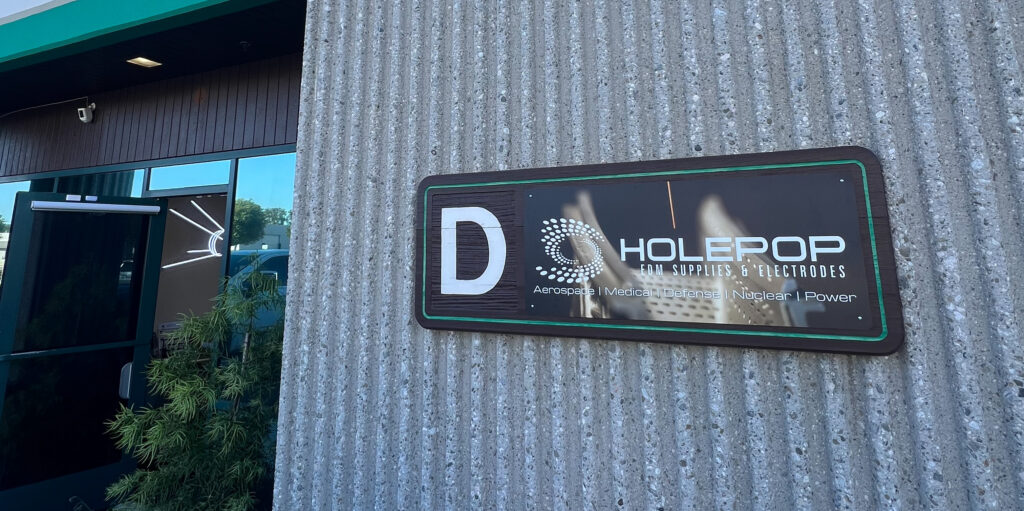Anatomy of an EDM Electrode
All electrodes used in EDM small hole drilling are designed with the single purpose of hole drilling in mind. As simple a task as this may seem, the variety of demands that different holes place on electrodes have resulted in the development of a commensurate variety of electrodes. Electrodes can be rods or tubes, multi-channel or single hole, and can vary along all dimensions, from their lengths to the eccentricity of internal tubing. The following list of possible modifications explains which characteristics of our electrodes may be modified, along with their advantages.


Electrode Modifications and their Advantages
- External Diameter—The external diameter of an electrode determines the diameter of the hole that is being drilled. This should be your chief consideration when choosing an electrode.
- Internal Diameter and Wall Thickness—When external diameter is equal, the ratio between the internal diameter and external diameter in different electrodes can determine drilling speed and electrode durability. Electrodes with thicker walls exhibit less wear, but greater tapering and a slower drilling speed. Electrodes with thinner walls drill at a faster pace and with less tapering, but with more wear, preventing them from drilling deeper holes.
- Multi-Channel—When drilling a blind hole to a set depth, single hole tubes will leave a nipple of unburned material. Multi-channel tubes solve this problem, as their internal electrodes burn away all excess material. Multi-channel electrodes come in many variations.
-
- Two and Three Channel—There is no practical difference between two and three channel electrodes. Whether a multi-channel electrode has two or three holes is based on the external diameter of the electrode. Larger electrodes need three channels for greater structural integrity.
- Wire Inserts—These are rods that are inserted into a single hole tube. These burn away nipples like two and three channel electrodes but with more material and less flushing.
- Y-Type and Web Type Electrodes—These serve the same purpose as two and three channel electrodes, but with less material and more flushing.

